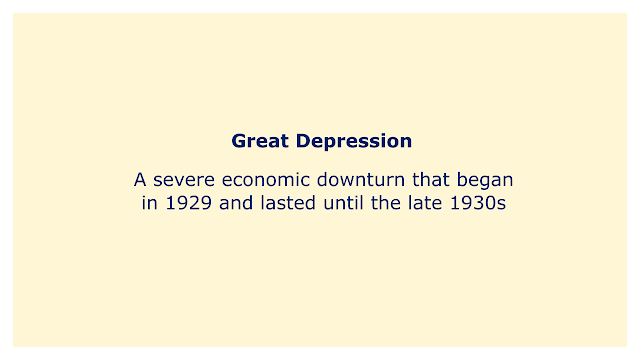 |
| Image: Moneybestpal.com |
The 1929–1939 period known as the "Great Depression" was marked by a severe economic collapse. An enormous drop in economic activity, widespread unemployment, and acute poverty were the hallmarks of the depression.
On October 29, 1929, sometimes referred to as "Black Tuesday," the stock market crashed, resulting in a loss of billions of dollars for investors and the start of the Great Depression.
There were several, intricate factors that contributed to the Great Depression. A significant contributing cause was the overproduction and underconsumption of goods and services, which decreased demand and, as a result, production and employment. A stock market bubble that burst, resulting in a significant loss of wealth and a decline in investment, made matters worse. A wave of bank failures and a rapid reduction in the money supply resulted from the banking system's weakness, which also affected the financial sector.
The Great Depression had severe repercussions, including extreme poverty, starvation, and homelessness. Almost a quarter of the workforce was unemployed at the height of the slump, setting records for unemployment. The agriculture sector was severely impacted by plummeting prices and the drought, and many firms failed. With the government becoming more involved in the economy and putting regulations into place aimed at preventing future economic disasters, the depression resulted in substantial social and political changes.
There were several, intricate factors that contributed to the Great Depression. A significant contributing cause was the overproduction and underconsumption of goods and services, which decreased demand and, as a result, production and employment. A stock market bubble that burst, resulting in a significant loss of wealth and a decline in investment, made matters worse. A wave of bank failures and a rapid reduction in the money supply resulted from the banking system's weakness, which also affected the financial sector.
The Great Depression had severe repercussions, including extreme poverty, starvation, and homelessness. Almost a quarter of the workforce was unemployed at the height of the slump, setting records for unemployment. The agriculture sector was severely impacted by plummeting prices and the drought, and many firms failed. With the government becoming more involved in the economy and putting regulations into place aimed at preventing future economic disasters, the depression resulted in substantial social and political changes.
